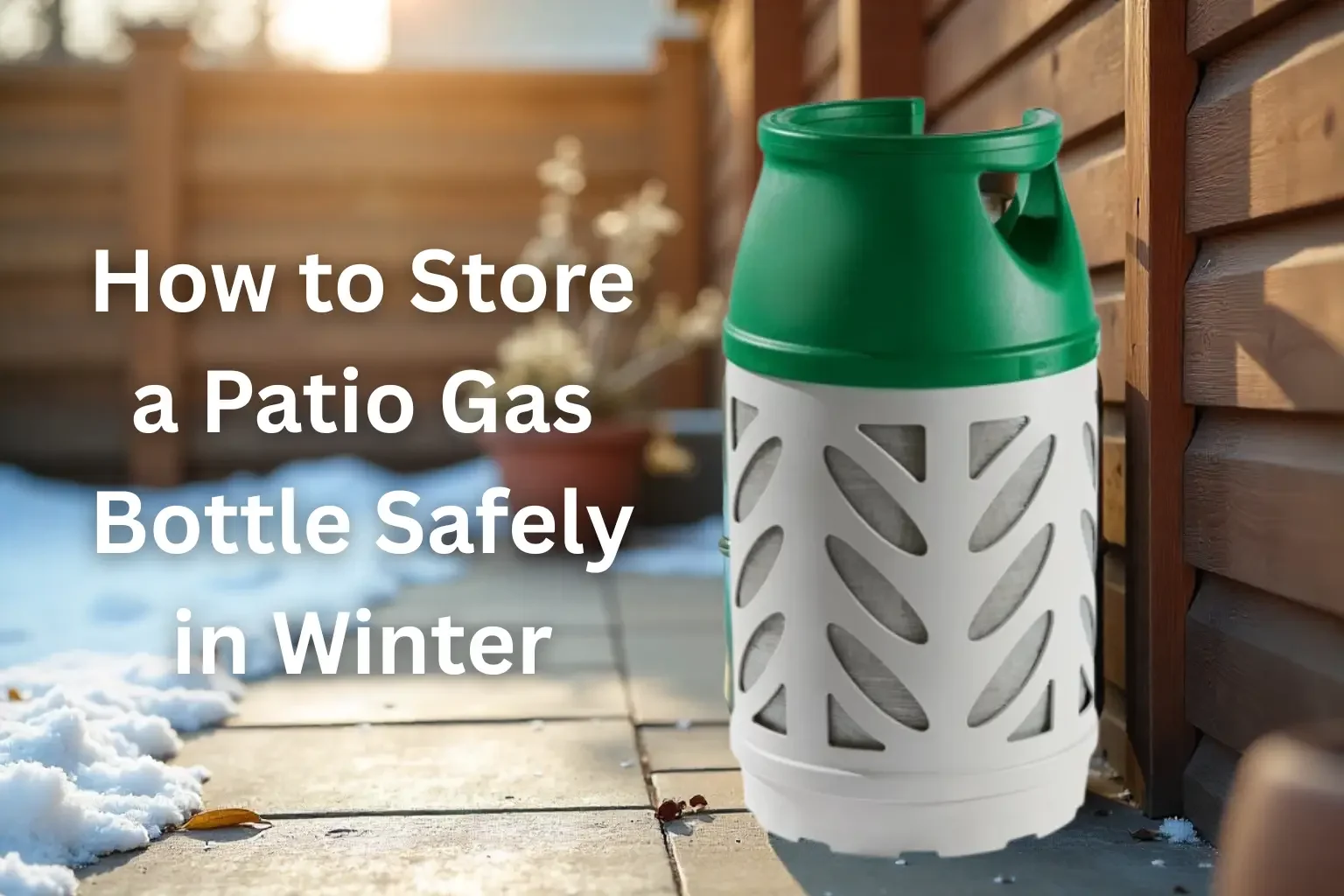How to Store a Patio Gas Bottle Safely in Winter
As the colder months arrive, many homeowners pack away their outdoor furniture, BBQ equipment, and heating systems — but one thing often overlooked is the patio gas bottle. Proper winter storage is essential to keep your gas bottles safe, efficient, and ready for use when warmer weather returns. Storing a patio gas bottle incorrectly can lead to leaks, corrosion, or even dangerous pressure build-ups due to temperature fluctuations.
Understanding What a Patio Gas Bottle Is
A patio gas bottle is a type of propane or butane gas cylinder commonly used to fuel outdoor heaters, barbecues, and fire pits. It’s specifically designed for patio use, providing clean, efficient energy that’s easy to transport and store. Most bottles are made from robust steel or aluminum, with a secure valve that connects to your gas appliance.
Because propane gas can still vaporize at lower temperatures, a patio gas bottle works well even in winter — but only if it’s stored and maintained properly.
Why Proper Storage Matters in Winter
Cold weather can cause metal to contract and increase internal pressure variations inside the patio gas bottle. If stored incorrectly — such as indoors, near heat sources, or in direct sunlight — it can create safety hazards. Moisture and condensation can also lead to rust or valve damage.
Proper storage ensures:
Safety: Reduces risk of leaks or explosions.
Efficiency: Keeps gas pressure stable for reliable performance.
Longevity: Prevents corrosion and mechanical wear.
Convenience: Ensures your patio gas bottle is ready for spring and summer use.
Step-by-Step Guide to Store a Patio Gas Bottle Safely in Winter
1. Disconnect the Bottle Correctly
Before storage, always ensure that your patio gas bottle is completely disconnected from any BBQ or heater. Turn off the appliance, close the gas valve tightly, and remove the regulator. This helps prevent leaks and accidental ignition.
2. Check for Leaks or Damage
Inspect your patio gas bottle for signs of wear, corrosion, or dents. You can check for leaks by applying a small amount of soapy water around the valve — if bubbles form, it indicates a gas leak. In such cases, contact your gas supplier immediately and avoid using the bottle.
3. Choose an Appropriate Storage Location
The best place to store your patio gas bottle in winter is outdoors in a well-ventilated, covered area such as a shed, garage (with good airflow), or a purpose-built storage unit. Never store gas bottles inside your home, cellar, or basement. Propane is heavier than air and can accumulate in enclosed spaces, creating a fire or explosion risk.
Key location tips:
Keep the bottle upright at all times.
Place it on a flat, solid surface (not directly on soil).
Avoid direct exposure to snow or rain.
Keep away from heat sources, open flames, or electrical devices.
4. Protect the Valve and Regulator
Use the protective valve cap or plug that came with your patio gas bottle to prevent dirt or insects from entering. Store the regulator separately in a dry place. This simple step extends the life of your fittings and ensures a safe reconnection in spring.
5. Avoid Storing Near Flammable Materials
Never keep your patio gas bottle close to flammable liquids, paints, or chemicals. In case of a leak, vapors from these materials could ignite easily. Maintain at least a 2-metre distance between your gas bottles and any combustible items.
6. Monitor Temperature and Ventilation
Although propane gas is stable in cold temperatures, avoid extreme freezing environments. If you live in an area prone to sub-zero conditions, insulate the storage area slightly or use a weatherproof cover that allows ventilation. Never completely seal off the patio gas bottle, as proper airflow is essential to disperse any leaked gas.
7. Store Multiple Bottles Safely
If you have more than one patio gas bottle, space them apart by a few inches. This helps air circulate and reduces pressure build-up between them. Also, label each bottle — full, half-used, or empty — so you can manage your supply efficiently next season.
8. Regular Winter Inspections
Throughout the winter, check your storage area once a month. Ensure the bottles remain upright, free of ice, and clear of debris or leaves. If you notice condensation or frost build-up, gently wipe it off to prevent corrosion.
9. Plan for Safe Reuse in Spring
When the weather warms up and it’s time to fire up your BBQ or patio heater, bring your patio gas bottle out from storage and inspect it once again. Check the rubber seal on the valve, reattach the regulator, and perform a quick leak test before reconnecting to any appliance.
Common Mistakes to Avoid When Storing a Patio Gas Bottle
Bringing it indoors: Never store a patio gas bottle inside your house or under the stairs — even a small leak can cause major safety issues.
Laying the bottle on its side: Gas should always be stored upright to prevent liquid leakage through the valve.
Covering too tightly: Avoid wrapping bottles completely in plastic or tarps — they need ventilation.
Ignoring inspection: Skipping safety checks can lead to unnoticed leaks or corrosion over winter.
How to Transport a Patio Gas Bottle Safely
If you’re moving your patio gas bottle to a storage area or refill station, always transport it upright in your vehicle. Secure it with straps and keep the windows open for ventilation. Never leave it inside a hot car or enclosed boot for extended periods.
Environmentally Friendly Disposal and Recycling
When your patio gas bottle is damaged or no longer needed, do not throw it away with household waste. Most suppliers offer a refill and return program — you can exchange empty bottles for filled ones at participating retailers. This eco-friendly approach reduces waste and ensures safe handling of pressurized containers.
Professional Storage Solutions
For people who use multiple bottles or run commercial setups, professional patio gas bottle storage cages are a smart investment. These metal enclosures are designed for ventilation, weather protection, and safety compliance. Many come with lockable doors and rust-proof coatings, ideal for restaurants, event spaces, or homes with limited garden storage.
Final Thoughts
Knowing how to store a patio gas bottle safely in winter not only protects your equipment but also keeps your family and property safe. Proper preparation, regular inspection, and choosing the right storage environment make a significant difference in performance and longevity.
By following these expert tips, you’ll ensure that when the warmer months return, your patio gas bottle is ready to power your BBQs, patio heaters, and outdoor gatherings without any hassle.
FAQs About Patio Gas Bottle Storage in Winter
1. Can I store my patio gas bottle in a garage?
Yes, as long as your garage is well-ventilated and not connected directly to your living space. Keep the bottle upright and away from any vehicles, heaters, or electrical devices.
2. Is it safe to leave a patio gas bottle outside in freezing weather?
Yes, propane performs well in cold weather. Just make sure the bottle is stored on a dry surface, upright, and protected from heavy snow or rain.
3. Should I disconnect the regulator before storage?
Always disconnect the regulator and fit the protective valve cap. This prevents debris from entering and keeps the valve clean.
4. How do I know if my patio gas bottle is empty before winter storage?
You can weigh it or pour warm water down the side — the area where the metal stays cool indicates the gas level.
5. Can a patio gas bottle explode in cold weather?
It’s extremely unlikely if stored properly. Most gas bottles are designed to withstand temperature variations. The real danger comes from incorrect storage, not the cold itself.
6. How long can I store a patio gas bottle?
Indefinitely, if stored in a dry, ventilated place. Just ensure you perform leak checks and inspect for rust or damage periodically.

